Kallidus Recruit candidate portal research project
Company
Kallidus are a B2B SaaS provider in the HR and Learning & Development space, that aim to unleash the potential in people through the use of their recruitment, learning and performance software.
Product
Kallidus Recruit is an applicant tracking system, which is adopted by organisations to support hiring the best people, faster. It consists of a candidate portal, hiring manager portal and recruiter portal.
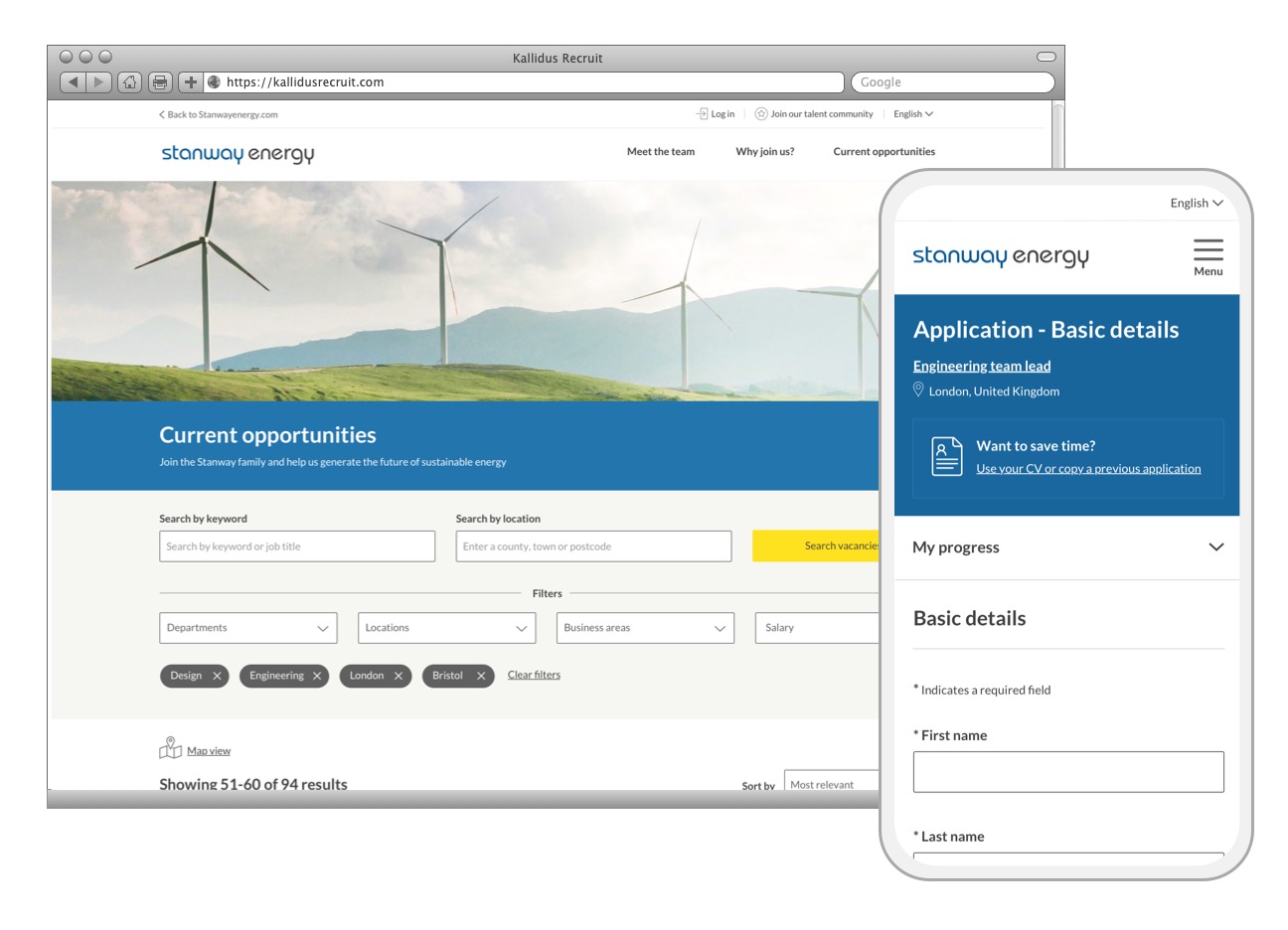
Kallidus Recruit candidate portal
My role
Lead UX researcher
The team
I worked independently on this research project while keeping other product team members (including product owner, developers, sales and implementation) up to date and eliciting their feedback.
My responsibilities
- Plan research approach
- Conduct research interviews
- Produce value proposition canvases
- Produce user journey map
The challenge
Kallidus had recently acquired a new ‘applicant tracking system’, called Recruit, that they wanted to bring in line with the wider suite of products.
One part of the applicant tracking system is the ‘candidate portal’, the website through which candidates can apply for jobs with an organisation. There was a desire to improve the UX and UI of the candidate portal so that it looked and felt part of the Kallidus suite, since currently the fact that it didn’t look and feel inline was a barrier to sales.
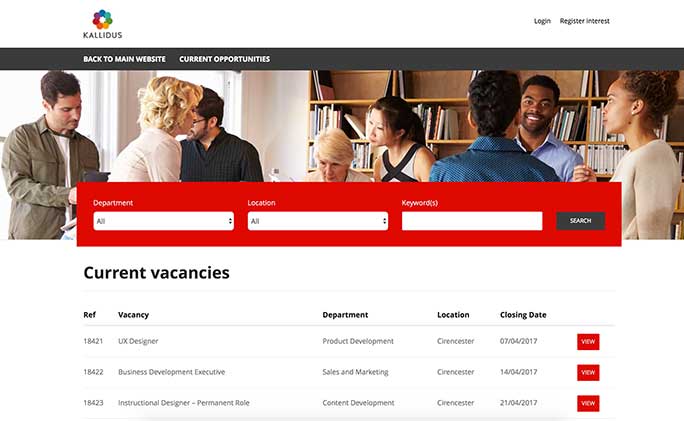
The candidate portal before it was redesigned to align with the Kallidus suite
The project goals
Ultimately we wanted the candidate portal to look like part of the Kallidus suite of products, in order to give more confidence to the sales team in selling the product. These became the success criteria for the design project.
For the research project, the goal was to understand users of the candidate portal system better so it would form the foundation for any design work.
Approach
Since the project was short I came up with a rapid research plan that included guerrilla user interviews.
The insights from the research needed to be absorbed and understood by a wide group of internal stakeholders that didn’t have much prior experience to user research and UX design. Therefore I needed the insights to be concise and visually easy to absorb, so I decided on creating a value proposition canvas for each persona that emerged, as well as a user journey map to demonstrate the as-is experience along with it’s pain points and areas for opportunity.
Summary of steps
Research
In order to conduct this research on a small budget, I planned guerrilla style interviewing, by going to a nearby city (Bristol) and asking passers-by for 15 minutes of their time for a £10 Amazon voucher (that I had previously purchased and printed out). I found a high footfall area around cafes, smoking areas, bike parking and seating which provided good opportunities for engagement.
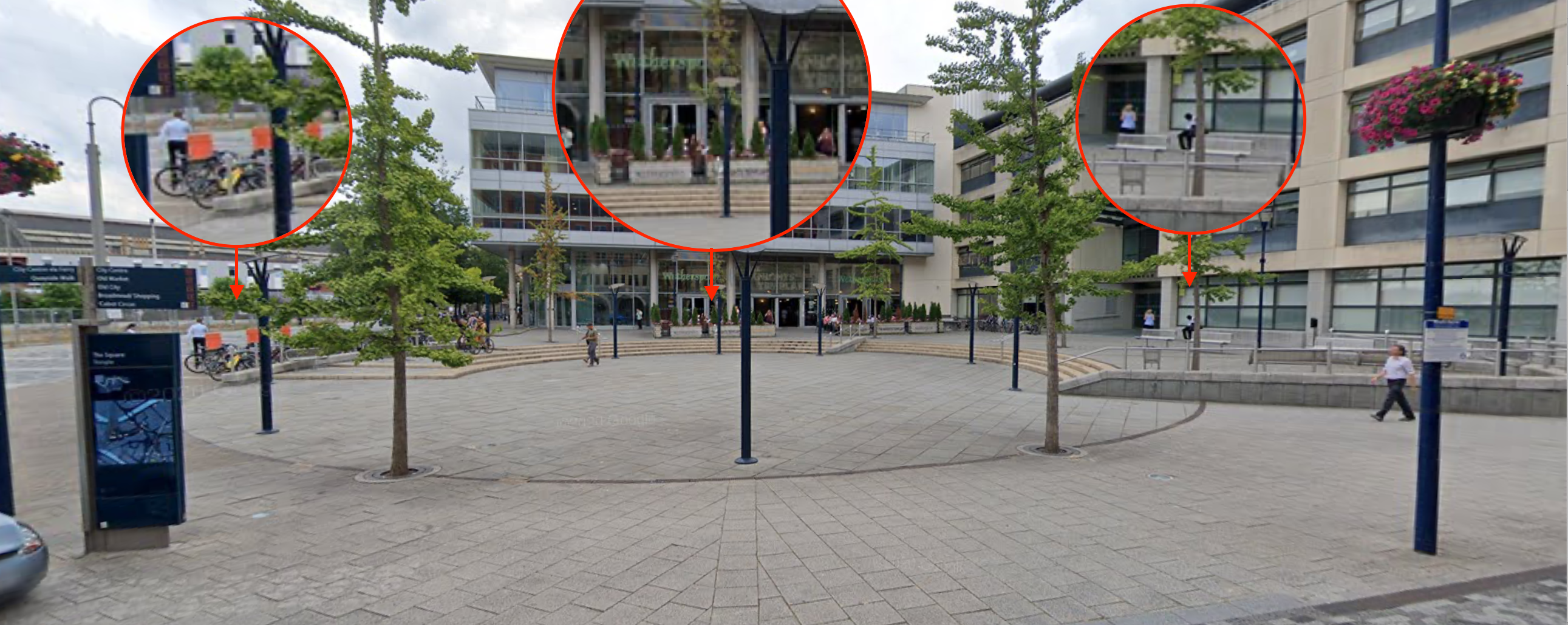
I pulled together an open format interview script that allowed me to understand each individual’s attitudes, behaviours, motivations and goals to applying for jobs, drawing on past experiences and future expectations. Since I was only asking for 15 minutes of their time (I deemed this the maximum amount of time people would be willing to give me with no notice), the script was short and concise.
Since the interviews were informal, I did not record them, and made handwritten notes (I had a clipboard with my questions on and space for scribbling down notes!).
Analysing and synthesising research insights
I took my hand written notes and typed them up properly in journal format.
From these notes I could see a pattern emerging of two ‘customer segments’ with differing pains, gains and jobs between them, based on people with no prior work experience, and those with work experience.
This led me to create two value propositions - one for ’experienced hires’ and one for ’non-experienced hires’. I documented the themes in pains, gains and jobs against each. Using the value proposition canvas and with the research interview insights, I documented the associated pain relievers, gain creators and mapped these to the pains and gains. From these pain relievers and gain creators I was then able to document ideas around the products and services we should provide.
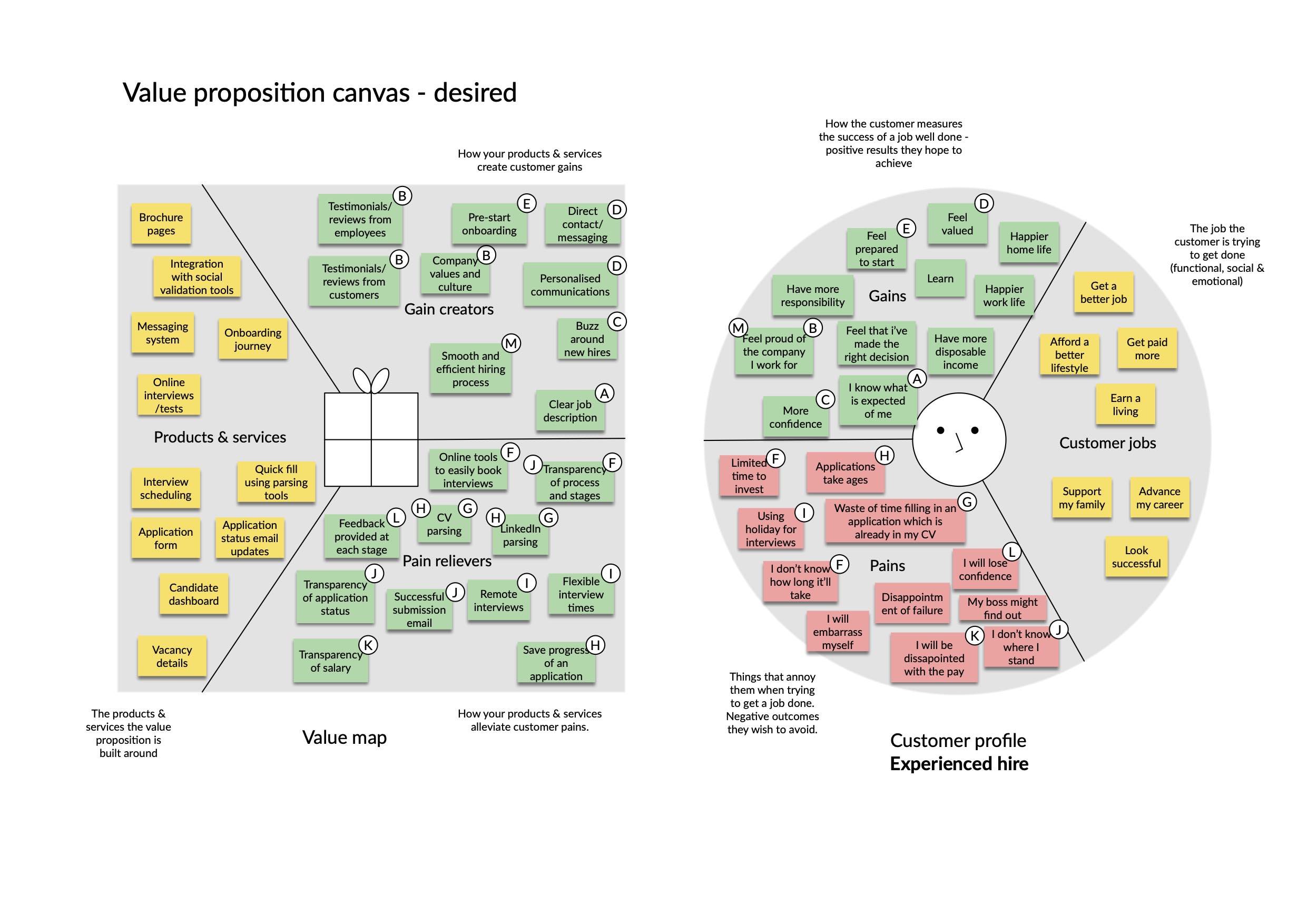
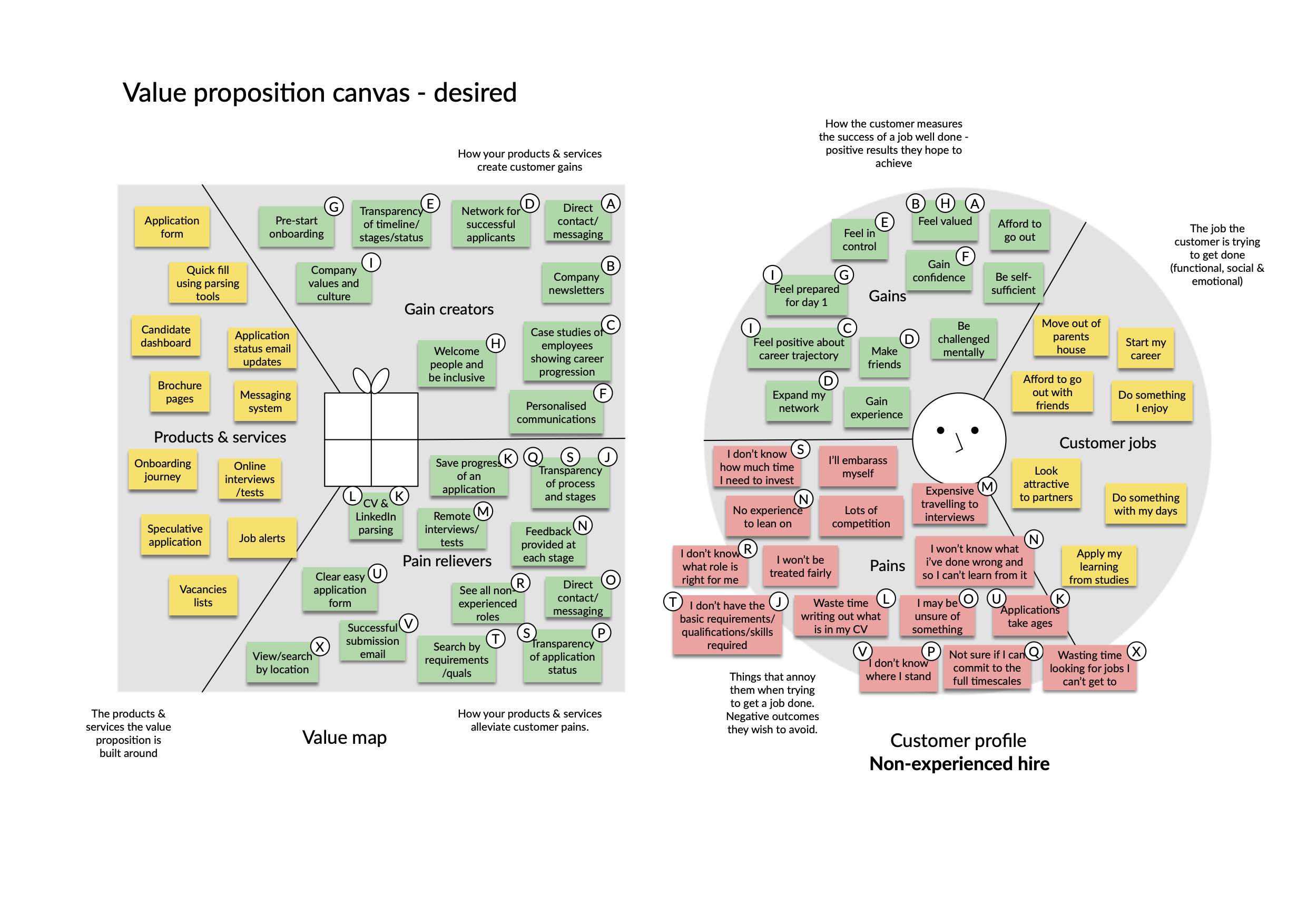
User journey mapping
Alongside the primary research I also conducted a user journey mapping workshop with internal stakeholders to map the current as-is process for candidates in order to identify pain points, moments that matter and areas for opportunity.
This interactive workshop was run over 3 hours, using flipchart paper and whiteboard markers. Later it was documented in digital format that was then circulated for further feedback.

Conclusion
Since this was a newly acquired product within the Kallidus suite, the Recruit applicant tracking system team had not worked with a UX designer before. Conducting the research activities not only provided the foundation for later UX work with insights from real-life users, but also educated the wider team on how UX can be used to improve product developments.
This research work has gone on to successfully inform the improvements to the candidate portal UX and UI, taking into account the differing user segments.
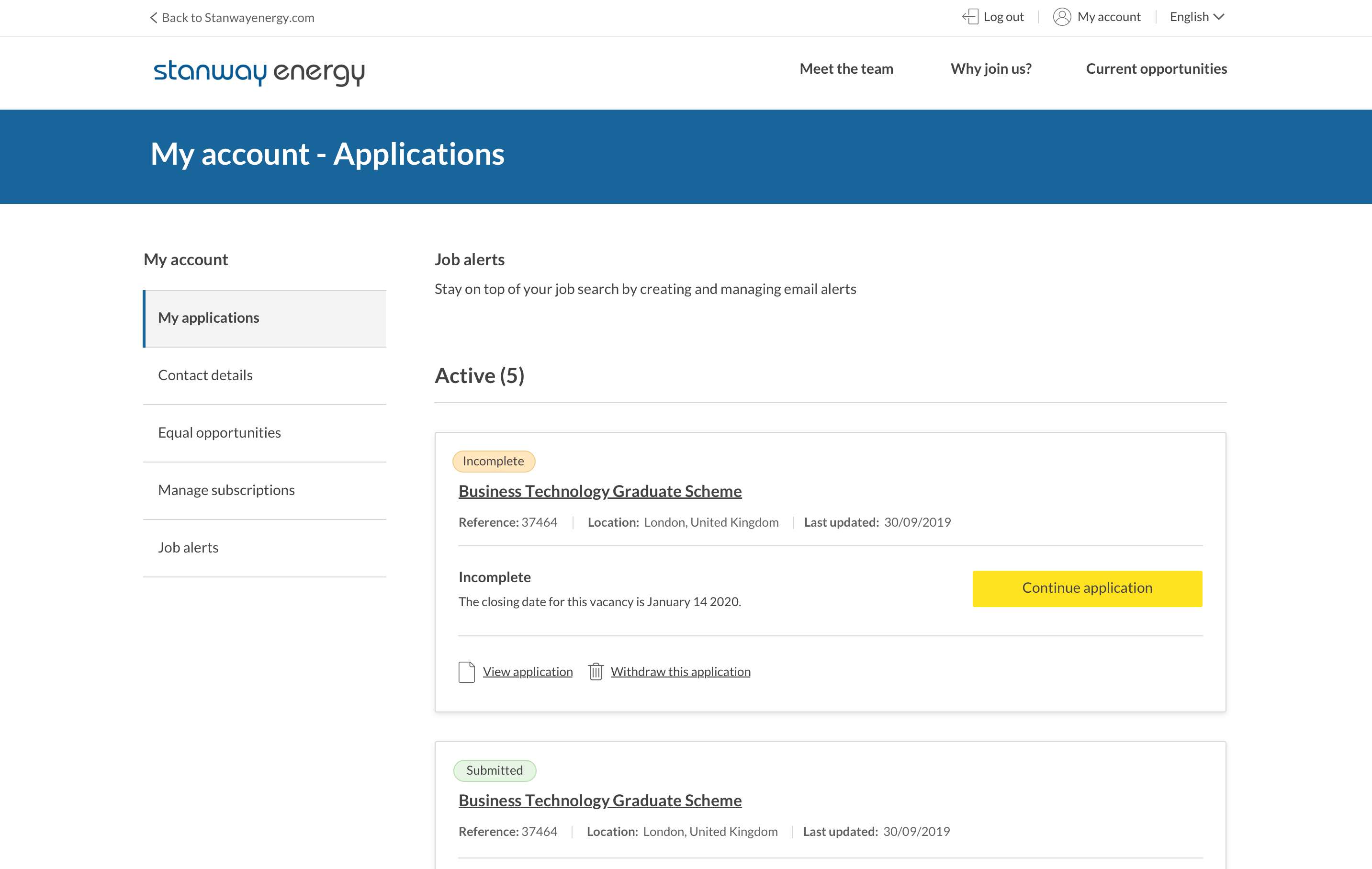
Updated Kallidus Recruit candidate portal design